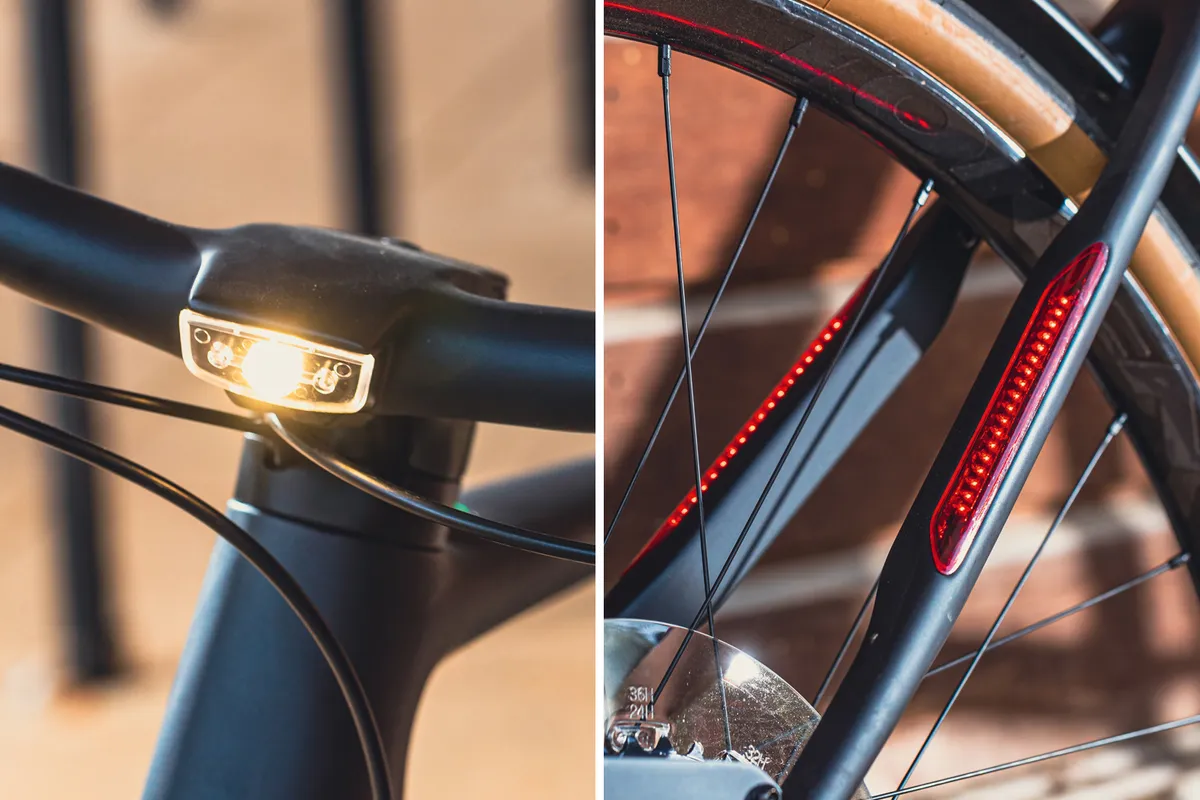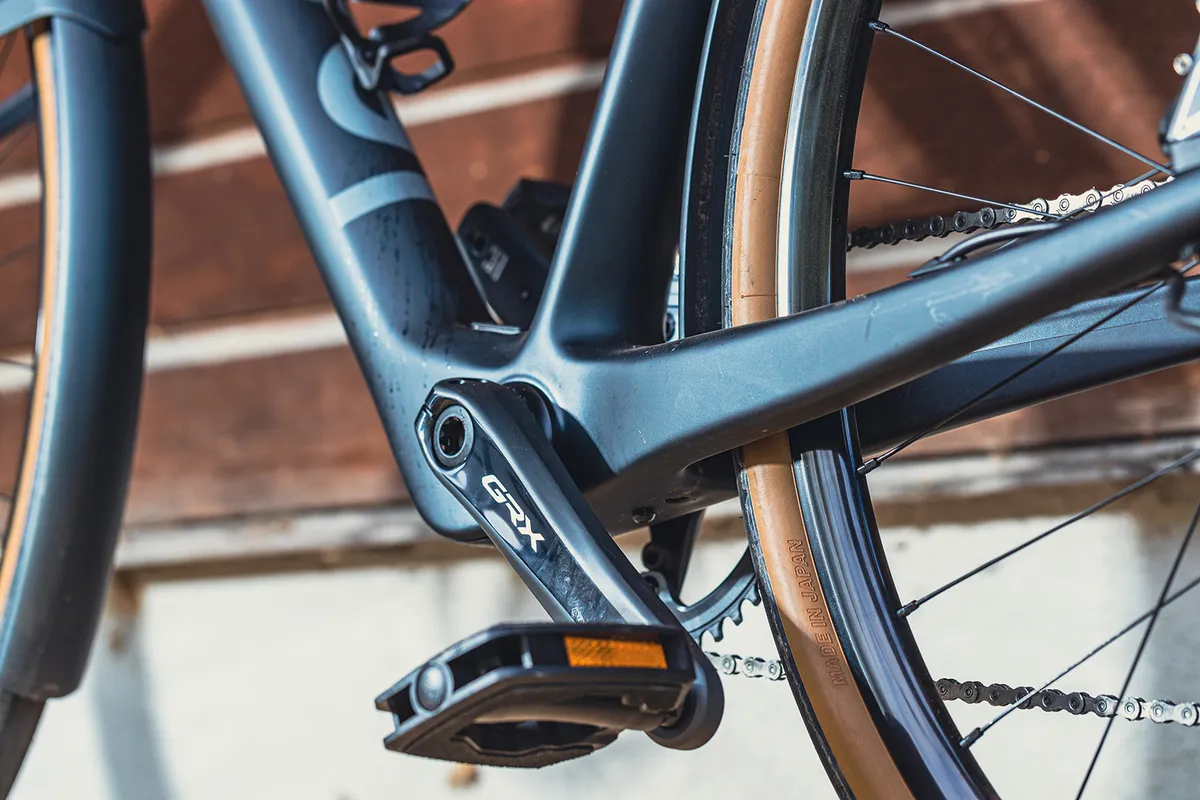Greg LeMond’s bike-building career started when he produced a carbon-framed machine back in 1990 and rode his eponymously named bike for Team Z in the 1991 Tour. Eventually, LeMond Bicycles became part of the Trek group (reportedly netting the Wisconsin company in excess of $100 million).
The partnership lasted for 13 years but sadly ended in acrimony, when Trek seemingly backed the wrong horse (Lance Armstrong) in a dispute after Greg was outspoken in his criticism of the state of professional road racing, specifically doping.
Since those troubled times, LeMond has been behind a smart trainer (the pro-Tour-team-backing LeMond Revolution) and had a partnership with high-end French carbon bike maker Time back in 2013, building beautiful and exclusive models bearing the LeMond name.
Carbon for decades
A pioneer of carbon fibre back in the nineties, Greg has continued to be involved with the black stuff and established LeMond Composites in 2016 at a $125 million facility in Tennessee.
He has now returned to the bike business with the all-new Prolog, a lightweight carbon ebike with a sporty edge, aimed at commuters who don’t want to compromise speed and handling.
It would have been easy for LeMond to make his comeback with a series of race-bred carbon bikes because the LeMond name still carries a huge amount of kudos among cycling fans, and Greg’s sheer talent and impeccable reputation as a fierce competitor and innovator is carved in stone.

The tougher route to take is this, making smart ebikes for a wider range of people. The LeMond range so far consists of the Dutch, a bike that takes the classic lines of a step-through Dutch roadster and gives it a slick futuristic makeover, and the sportier, speedier Prolog that I’ve had the pleasure of testing out.
The LeMond website also lists a bike simply labelled ‘Road’ with a link to private early access, which could be a very intriguing development.
LeMond Prolog ride impressions
The Prolog’s light weight and slick integrated looks are one thing, but I must admit the biggest surprise with the bike is just how dynamically competent it feels to ride. I’ve tested a whole host of flat-barred commuter bikes over the years, both assisted and non-motorised.
For the most part, this style of bike takes its influence from mountain-bike design. That usually means a relaxed head angle and a much more upright riding position, making for a relaxed ride with steady steering.

The Prolog, however, has a much sportier ride like the best electric hybrid bikes. Its head angle is slightly relaxed and the stack height is about the same as you’d expect on a similarly sized endurance bike (such as the Giant Defy or Cannondale Synapse); my large test bike has a 635mm stack.
The reach is long at 420mm, though, putting me very much in an attacking, more speed-orientated position.
The relaxing of the head angle gives a trail of 77mm (trail is the horizontal measurement from the front tyre’s contact patch to where the steering axis meets the ground); a smaller trail measure produces a faster-handling bike.

I’d expect around 58-60mm on an endurance road bike, so the Prolog should, in theory, have more stable handling than a drop-bar bike. The reality, however, is the very wide 760mm bar helps the steering feel sharper, as part of the one-piece full carbon monocoque cockpit with around 100mm of effective stem length.
In effect, the Prolog feels stable over rough stuff, especially over rougher broken surfaces such as un-metalled towpaths and cobbles, but the steering isn’t slow.
The wide 38mm tyres, specially made for LeMond by Panaracer, give the stiff, responsive Prolog chassis just the right amount of cushioned comfort.

The same is true of the bike’s contact points. Tight-cell foam grips provide ample cushioning and plenty of grip for your hands, while the Selle Royal Lift saddle is comfortable whether you’re wearing full civilian clothes or padded cycling shorts.
The saddle is also reinforced with a rear grab handle to help you lift the bike because, although 13 kilos is light for an ebike, it’s still heavier than many non-motorised flat-bar bikes.
Shimano’s GRX drivetrain is a smart choice with its simple 1x (single chainring) setup and clutch-equipped rear mech keeping the chain in place.

The Rapidfire Plus flat-bar road shifter matches seamlessly to the GRX mech, and, with Shimano also providing the excellent disc brakes, it’s a no-nonsense, slick operation.
LeMond also offers upgrades to the standard bike so you can upgrade to a mix of Shimano electronic XT Di2 gearing and XT brakes, replete with the Deore XT Di2 system LCD display and e-tube connectivity to Shimano’s app.
The final piece in the puzzle is Token’s G23AR Prime wheelset. These alloy wheels are aimed at gravel riders, so have a wide rim well suited to the 38c tyres, plus an impressively low weight at 639g (front) and 784g (rear).
Again, here LeMond offers what must be one of the fanciest upgrade options for a wheelset: LeMond carbon rims (21mm internal width) built onto German lightweight master Tune’s Kill Hill rear hub and lightweight front-disc hub for a wheelset that’s significantly lighter than the already lightweight Tokens that come as standard.
LeMond Prolog range
Mahle’s Ebikemotion powers the Prolog and, compared to complex mid-mounted ebike systems, it’s relatively simple.
The oversized rear hub houses a 250W motor that puts out 40Nm of torque. It’s controlled by a single button that’s flush-mounted into the bike’s top tube, called the iWOC controller.

Using the iWOC is easy, with its colour-coded LED ring around the button that shows power modes and gives you a rough indication of the juice left in the tank.
Press to turn it on and the ring shines white; press and hold and it turns green (low assistance), orange (medium) and red (full power).
The button defaults to show battery level after you’ve pressed it. White is 100-75 per cent, green 75-50 per cent, orange 50-25 per cent, red 25 per cent and flashing red less than 10 per cent.

The LeMond’s iWOC adds another control: flick through to the orange level and hold the button for a second, and the bike fires up its front headlight and illuminated seatstays.
You can also control the light operation through the very clever Ebikemotion app, which, by the time you read this, will have been renamed Mahle SmartBike (all part of Ebikemotion’s incorporation into the Mahle family since the brand’s takeover a couple of years ago).
Whatever the name, it stands that the Prolog has very clever app support. You can use it to custom-tune power assistance levels, keep a better eye on power reserves, operate the lights and even link it to a heart-rate monitor so it’ll adjust the assistance to keep your heart rate within set parameters.
In the past, I’ve been impressed by Ebikemotion’s distance range, though usually that’s when powering the likes of Cannondale’s SuperSix Evo Neo or Scott’s flyweight Addict eRoad.

Therefore, I wasn’t expecting the Prolog to match their range, mainly down to its much lower gear range from the 1x GRX drivetrain, meaning I’d expect to spend more time in the motor’s power zone rather than above it.
So I was pleasantly surprised by the Prolog achieving at best an impressive 63.75miles/102.59km with 3,005ft/916m of elevation when the flashing red iWOC finally dropped all its reserves.
LeMond claims 45 miles as an average range, set to the higher USA lawful assistance level of 20mph/32kph, while here in the UK it’s in line with Europe’s 15.5mph/25kph but, either way, I think LeMond has erred on the side of caution when it comes to stating range.
LeMond Prolog geometry
| | S | M | L |
|---|---|---|---|
| Seat angle (degrees) | 73 | 73 | 73 |
| Head angle (degrees) | 70.5 | 71 | 71 |
| Chainstay (mm) | 445 | 445 | 445 |
| Seat tube (mm) | 470 | 530 | 590 |
| Head tube (mm) | 130 | 165 | 202 |
| Trail (mm) | 80 | 77 | 77 |
| Bottom bracket height (mm) | 283 | 283 | 283 |
| Wheelbase (mm) | 1,040 | 1,067 | 1,099 |
| Standover (mm) | 767 | 818 | 842 |
| Stack (mm) | 565 | 600 | 635 |
| Reach (mm) | 380 | 400 | 420 |
| Stem length (mm) | 100 | 100 | 100 |
| Tyre width (mm) | 38 | 38 | 38 |
| Bar width (mm) | 710 | 735 | 760 |
LeMond Prolog bottom line
When the Prolog all comes together, it’s not just a seriously good commuter bike, it’s a seriously good sports bike.
If you’re looking for a sporty assisted bike that’s good for big miles and big hills, yet light enough to ride unaided, then this is one top-rated option.

The downside is that, at over £4,000, it’s a lot of money for purely commuting. But, if you’re a roadie at heart and want something that feels familiar yet is better for navigating traffic, urban roads and byways, then look no further.
What really impresses is the no-compromise approach to what could be considered an ‘unfashionable’ bike, and the success of its smart design.
Greg and his team could’ve taken the easy route by bringing out a competent standard road bike, and his name and reputation would most likely have ensured success.

The bravery of launching a new brand and new endeavour into a genre of bike where potential customers are not necessarily as impressed by big ‘race’ names and historical status should be applauded.
Greg was a rider who took risks with new technology when he was ruling the racing world, so it’s great to see that some things never change.
Product
| Brand | lemond |
| Price | 5195.00 EUR,4350.00 GBP,4795.00 USD |
| Weight | 13.4000, KILOGRAM (L) - |
Features
| Fork | Carbon |
| br_stem | LeMond one-piece carbon fibre bar/stem |
| br_chain | Shimano |
| br_frame | Carbon |
| br_motor | Mahle ebikemotion X35+ 250W and 250Wh battery, iWOC controller |
| Tyres | Panaracer LeMond LE Gravelking 38c |
| br_brakes | Shimano RS405 hydraulic discs |
| br_cranks | Shimano GRX |
| br_saddle | Selle Royal Lift |
| br_wheels | Token G23AR wheels with Ebikemotion X35 rear hub motor |
| br_shifter | Shimano |
| br_cassette | Shimano |
| br_seatpost | LeMond carbon |
| br_handlebar | LeMond one-piece carbon fibre bar/stem |
| br_availableSizes | S, M, L |
| br_rearDerailleur | Shimano GRX |
| Features | Pedals: Flat Lights: Integrated front and rear Mudguards: Integrated one-piece |
